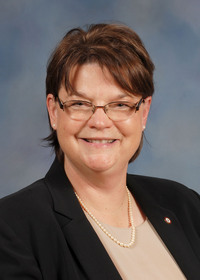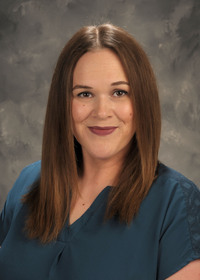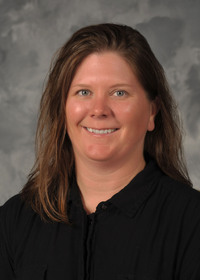Information Possibly Outdated
The information presented on this page was originally released on July 5, 1999. It may not be outdated, but please search our site for more current information. If you plan to quote or reference this information in a publication, please check with the Extension specialist or author before proceeding.
Hands-On Curriculum Teaches Good Nutrition
MISSISSIPPI STATE -- Teachers from across the state made bread, soup, ice cream and more one week this summer as they learned techniques they can use to teach their students good nutrition and health.
The Mississippi State University Extension Service held a distance learning workshop at 10 locations statewide June 28 to July 1 to teach the Exploring Nutrition in the Classroom curriculum. Three continuing education unit credits were granted to teachers who participated.
Nelda Starks, Extension nutrition education specialist, said the curriculum was designed to bring nutrition education into schools.
"We tried to integrate the lessons with what teachers are already teaching," Starks said. "All the lessons and activities in the curriculum are tied to the state Department of Education core requirements."
Teachers learned how to use the curriculum to teach about the food pyramid, food safety, growing a garden, insects and the importance of eating enough foods such as fruit, grains and dairy products. Each study topic includes different experiments and projects for students to do in class, such as sampling breakfast cereals for sugar content, watching yeast ferment and inflate a balloon, and making homemade ice cream.
Grenell Rogers, Oktibbeha County Extension home economist, said morning training sessions were broadcast from two locations at MSU and one in South Panola. Teachers in each of the sites received instruction using distance technology, and then participated in hands-on activities each afternoon.
"We're teaching different hands-on activities for teachers to learn so they can go back to their classrooms with the nutrition curriculum and activities," Rogers said. "It's experiential learning as the teachers are learning by doing."
In addition to reducing travel time for teachers, holding this training at locations across the state allowed teachers to meet local Extension employees. Extension county agents, home economists, 4-H agents and Expanded Food and Nutrition Education Program educators were brought in to teach different lessons and activities.
"We're introducing teachers to the Extension staff in their area so they can call on these same agents to serve as guest speakers in their classrooms later," Rogers said. "We hope to use this nutrition program to involve more youth in 4-H and EFNEP."
Birdie Ephriam, a third grade teacher at Cook Elementary in Columbus, participated in the program at MSU and said the curriculum is a wonderful tool she intends to put to use in her class.
"I'm going to take these activities back and use them as an enrichment activity," Ephriam said. "It's going to teach the kids early in life about good nutrition and eating proper foods."






